The Use of Sustainable Materials in Custom Plush Toys
As environmental awareness increases, the toy industry is increasingly adopting green practices and custom plush toys are no exception. In the past, the majority of toys were made from synthetic materials and high-waste manufacturing methods, custom plush toys manufacturers are now changing to use eco-friendly materials and more sustainable supply chains. This shift not only benefits the environment, but it is also in line with the values of eco-conscious consumers and companies.
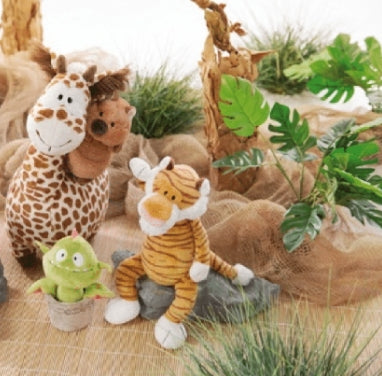
Why Sustainable Materials Become more Important to Plush Toy Manufacturing
1. Environmental Impact of Traditional Plush Toys
Traditional plush toys are usually constructed from polyester, which is a petroleum-based plastic, not biodegradable and requires a lot of energy to manufacture. The process of manufacturing often includes harmful dyes, high use of water, and emission which contribute to the environment and climate changes. In addition, the toys often are disposed of in landfills which can require many years for them to break down.
2. Health and Safety Concerns
Toys made of synthetic material and colored with chemical-based colorants might contain traces of chemicals that could cause harm, particularly for toddlers and infants who play using their mouths. Sustainable alternatives typically make use of non-toxic, certified materials which are gentler on sensitive skin and are safer for children.
3. Growing Consumer Awareness
The parents and their caregivers have become aware of the ingredients used in the toys their children play with. There is a shift towards buying plush toys made of organic, recycled or non-toxic components. These trends are driving changes in the market, and causing companies to reconsider their material sources and manufacturing processes.
4. Brand Responsibility and Market Value
Toy makers using sustainable practices, it is not just ethically sound but also strategically strategic for business. Eco-friendly products improve brand image as well as increase customer loyalty and allow for the opening of new markets. Certifications like GOTS OEKO-TEX(r) as well as Fair Trade also help companies to stand out in a crowded market.
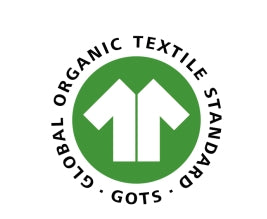
5. Circular Economy and Waste Reduction
Sustainable production of plush toys helps to create a circular economy by encouraging recyclable and biodegradable materials. This decreases waste and helps conserve resources, allowing old toys to be recycled safely back into the earth or to be recycled to create new products.
6. Innovation in Materials and Design
The move towards sustainability has prompted innovation. Manufacturers are exploring new options like organic cotton, the bamboo fibres of bamboo, corn-based stuffing and recycled PET fabric. These materials are less harmful to the environment but still retain their softness and durability and opulence that toys made of plush are renowned for.

Key Sustainable Materials Used in Custom Plush Toys
1. Organic Cotton
Organic cotton is cultivated with no synthetic pesticides, fertilizers or chemical substances which makes it more safe for the farmers, the environment and consumers. It is commonly used as the fabric that covers plush toys because of its quality and softness, as well as hypoallergenic characteristics. Its production requires less water and supports healthier soil ecosystems, which makes it an essential component of eco-friendly toys.
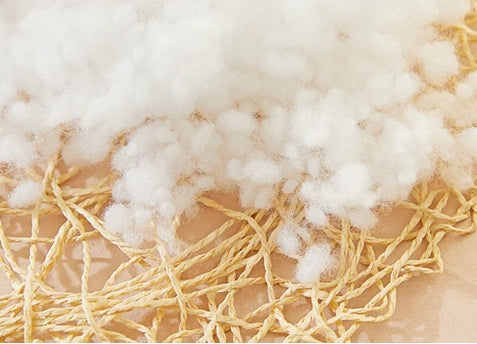
2. Recycled Polyester (rPET)
Recycled Polyester, also known as rPET, is created from recycled plastic bottles. It is as durable and softness of virgin polyester, but has much smaller carbon footprint. It is used extensively for stuffing toys and even for external fabric, giving plastic an extra life while reduces landfill waste.

3. Bamboo Fiber
Bamboo grows quickly without the requirement for pesticides or a lot of water usage, making it among the most environmentally friendly raw materials. Bamboo fibers are antibacterial, soft and biodegradable. In the form of plush toys bamboo fibers are utilized in fillings and fabrics to provide a luxurious experience and support the sustainability goals.
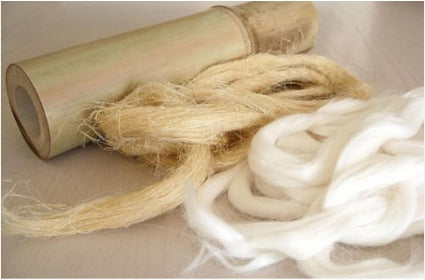
4. Corn Fiber (PLA Fiber)
It is biodegradable and compostable substance derived from cornstarch. It is renowned for its silky texture, it’s an alternative to fillers made from synthetic materials. It naturally breaks down under conditions of composting, making it an ideal option for eco-friendly toys. production.

5. Wool and Alpaca Fleece
Alpaca and wool that is sourced ethically fleece are biodegradable and renewable materials that give warmth and a soft texture. When used in toys that are plush they provide an organic feel and appearance as well as promoting small-scale, animal-friendly farms that adhere to sustainable practices.
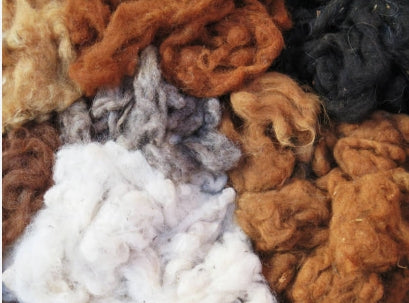
6. Natural Dyes
Synthetic dyes may contain toxic heavy metals and substances. Natural dyes, which are derived from minerals, plants as well as insects, offer a safer and greener alternative. These dyes are typically utilized in eco-friendly plush toys to create soft, earthy hues without the risk of skin irritation or environmental pollution.
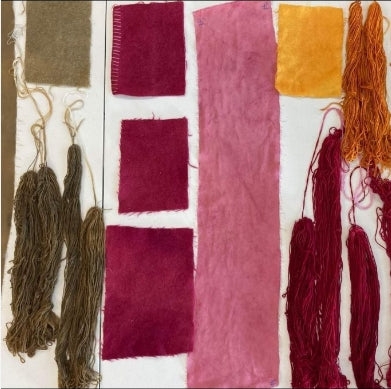
7. Coconut Fiber (Coir)
Although it isn’t as common in the traditional toys for plushies, coconut fiber is being studied due to its natural resilience and biodegradable qualities. It can be utilized to create structural elements in animal toys, and is the most innovative solution to semi-rigid or rigid features.
Sustainable Manufacturing Practices in Custom Plush Toys
Sustainable manufacturing practices in custom plush manufacturing can help minimize environmental impacts, improve product safety and increase confidence among consumers. From efficient energy use to ethical labor standards, these practices are redefining the way that custom-made plush toys are produced.
1. Eco-Friendly Material Sourcing
Sustainability starts by choosing ethical raw materials. Manufacturers are increasingly utilizing organic bamboo fabric, cotton and recycled polyester (rPET) as well as biodegradable cotton fiber. These materials have a less carbon footprint, use less natural resources, and also eliminate harmful chemicals that are commonly used in traditional fabric production.
2. Energy-Efficient Production
Modern factories for plush toys are embracing renewable energy sources such as wind and solar power to decrease greenhouse emissions from gas. Furthermore, energy-efficient equipment and advanced factory systems reduce the use of electricity for sewing, stuffing and assembly procedures. This significantly reduces emissions from every toy.
3. Water Conservation Techniques
Traditional dyeing processes use massive amounts of water, and also release chemical effluents. Sustainable manufacturing focuses on environmentally friendly dyeing techniques as well as closed-loop water systems and the utilization of plant-based or natural dyes. These practices help to conserve water as well as prevent pollution of ecosystems in the local area.
4. Waste Reduction and Recycling
Leading companies implement zero-waste practices through recycling fabric scraps and cuttings from patterns, and creating designs with a minimum of offcuts. Packaging materials are being reinvented with recyclable cardboard and biodegradable materials or even fabric-based wraps to cut down on single-use waste.
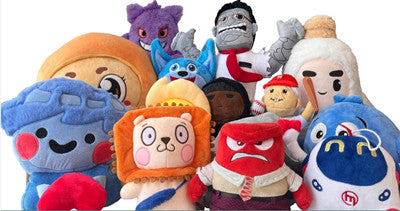
5. Ethical Labor Practices
Sustainable manufacturing goes far beyond environmental concerns and includes a social accountability. Fairly-paid factories offer decent wages, safe working conditions, and also support the development of communities. Certifications such as Fair Trade or SA8000 ensure that toys are manufactured in facilities that are respectful of the rights of workers and human rights.
6. Eco-Friendly Packaging
The journey to sustainability doesn’t stop when the item is finished. Packaging in custom plush toys, is being revamped to meet environmental standards. Many brands are using recyclable or compostable materials that have the use of inks that are not as thick to minimize the amount of waste generated by the environment. Many times labels and tags are made out of recycled paper or seed paper that is plantable.
7. Certifications and Transparency
To ensure customers and partners of their fidelity, companies typically seek certifications from third-party organizations. They include:
- l GOTS (Global Organic Textile Standard)
- l OEKO-TEX(r) (for the safety of chemicals)
- l FSC-certified packaging
- l CarbonNeutral(r) or similar carbon offset programs
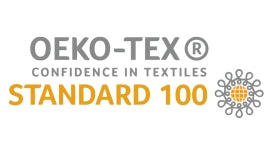
The transparency of manufacturing, sourcing and labor practices helps boost confidence among consumers and promotes greater industry acceptance of sustainable practices.
Challenges and Future Solutions in Using Sustainable Materials for Custom Plush Toy Manufacturing
| Challenge | Description | Future Solution |
| Limited Material Availability | Organic cotton is one of the sustainable alternatives. or PLA fibers aren’t yet readily available in the world. | Make investments in global network of sourcing as well as R&D to develop sustainable, scalable innovation in materials. |
| Higher Production Costs | Eco-friendly materials are often more expensive because of organic certification, a limited supply or special processing. | Gain efficiency of scale. simplify logistics, and reward sustainable partnerships for sourcing. |
| Color and Texture Limitations | Natural dyes and natural fibers might not have the vivid color or softness of synthetic alternatives. | Create advanced, non-toxic dyes and finishing techniques to enhance appearance and softness. |
| Durability Concerns | Certain bio-based materials can be more degraded or be less effective in the face of wear and tear. | Engineer blended fibers combine durability with increased strength and toughness. |
| Supply Chain Transparency Gaps | The search for the source of material and verification of ethical sources is still a problem. | Utilize Blockchain, QR trackers and third-party verification to ensure transparency of the supply chain. |
| Lack of Standardization | There is no standard between suppliers of eco-friendly material classification. | Advocate for international certification frameworks, as well as material classification systems for plush materials. |
| Consumer Price Sensitivity | Eco-friendly plush toys could be priced more expensive than traditional ones, thus limiting their appeal to the market. | Make people aware of the longevity, health safety and the green benefits of eco-friendly toys. |
| Disposal and End-of-Life Options | Many eco-friendly toys aren’t equipped with an easy way to compost or recycle after use. | Create with a circular mindset, using recyclable components and even offer toys reuse and return programs. |

Final Thoughts
The transition to sustainable materials for custom plush toys is an important move towards reducing the ecological impacts of the toy industry. By focusing on renewable, recycled and biodegradable elements, custom plush manufacturers can create toys that are fun for children and are more eco-friendly.
